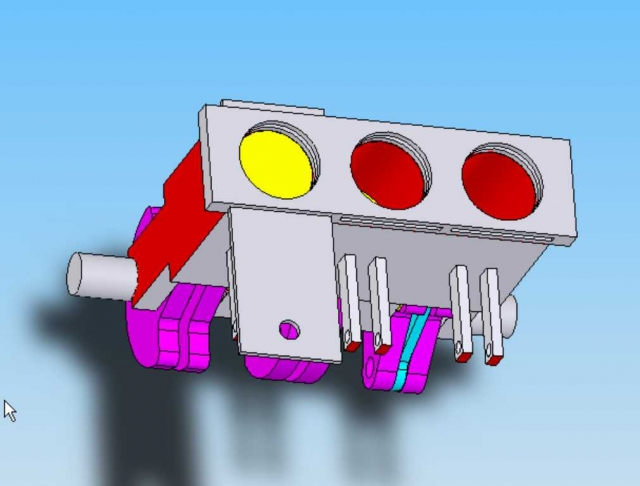magnetic piston engine three times
published: 23/07/08, 13:08
Hello,
I walk this forum for some time now, and I thought to myself why not let go of this crazy idea!
I simplify the unit: An internal combustion engine is a piston, a valve, a system of "distribution", a connecting rod.
- The piston is a strong magnet.
- The valve is a powerful electromagnet
- The "distribution" system is an electrical switch
- The connecting rod with its flywheel converts the reciprocating movement to rotary.
The idea is based on magnetic attraction / repulsion
In the electromagnet one discharges sometimes in one direction and sometimes in the other a capacitor of high capacity this to modify the "polarity" of the magnetic field of the electromagnet. Between the two states, a third - the one which allows the capacitor to be charged with a sufficient voltage so that its discharge in the electromagnet creates a sufficient magnetic field to attract or repel the magnetic piston.
Here is the basic idea ...
Well, there are indeed ingenious, experiementateurs me, I do not have the material means
So, is it crazy or not?
thank you for supporting me
I walk this forum for some time now, and I thought to myself why not let go of this crazy idea!
I simplify the unit: An internal combustion engine is a piston, a valve, a system of "distribution", a connecting rod.
- The piston is a strong magnet.
- The valve is a powerful electromagnet
- The "distribution" system is an electrical switch
- The connecting rod with its flywheel converts the reciprocating movement to rotary.
The idea is based on magnetic attraction / repulsion
In the electromagnet one discharges sometimes in one direction and sometimes in the other a capacitor of high capacity this to modify the "polarity" of the magnetic field of the electromagnet. Between the two states, a third - the one which allows the capacitor to be charged with a sufficient voltage so that its discharge in the electromagnet creates a sufficient magnetic field to attract or repel the magnetic piston.
Here is the basic idea ...
Well, there are indeed ingenious, experiementateurs me, I do not have the material means
So, is it crazy or not?
thank you for supporting me
